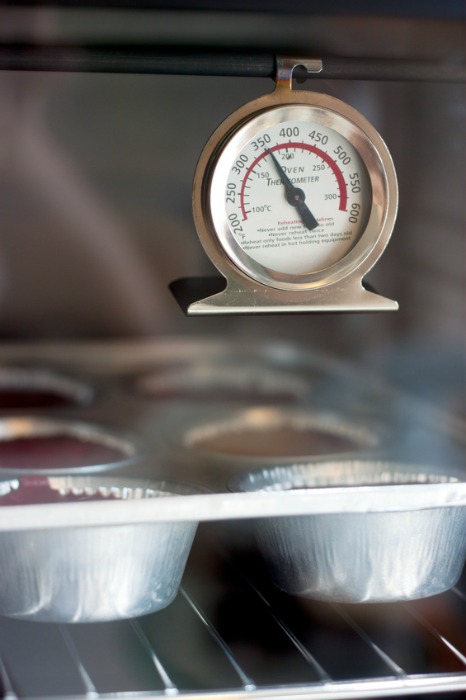Avoid Baking Fails: Time and Temperature
Posted by Julie on Sep 30th 2016
Last Friday we began our three part series on avoiding baking fails with a post on ingredient mishaps. Today in Part 2, we'll cover the ways time and temperature can wreak havoc on baking. We'll share the smart tips we found to help you avoid these pitfalls. You might be surprised by just how easy it can be to make your baking better.
Avoid Baking Fails: Troubleshoot Your Oven
Just because the digital readout on your oven claims the internal temperature is 350°F doesn't make it so. This post on oven temperature variance from Angela on Oh She Glows is eye-opening. She cites a study from Cooks Illustrated and shares her own oven calibration adventures.
We recommend following her example by using a thermometer. Then when baking, set the temperature higher or lower as needed to offset the variance. Be sure to check how long it takes to properly preheat your oven too.

Another smart at-home test to conduct is this one from Bon Appetit which helps identify hot spots within your oven. We love how simple it is to isolate those areas where the temperature is higher or lower than average. You'll be glad to have this knowledge when you bake delicate creations like macarons or soufflés.
Avoid Baking Fails: Stay Cool
While you want your oven to stay hot, other things should be kept cool for best results. For example, cookie sheets should be cool when you slide them into the oven. If you put cookie dough on a hot sheet, the butter will start to melt immediately and your cookies will spread.
To avoid this outcome, rotate through multiple cookie sheets when baking. This approach will give them more time to cool. Also, don't place cookie sheets on the stovetop while you're dropping dough onto them. The heat from the oven radiates through the stovetop and warms up your cookie sheets. Work on another counter surface instead. If your sheets are still too warm, rinse them off between batches and wipe dry.

Another creation that should be cool when going into the oven is a pie. Cold butter is what makes pie crust flaky. King Arthur Flour does a great job of explaining why:
The chilled fat in the unbaked dough keeps its thin layers of flour/water separated; so long as that fat is cold, the layers stay separate. When the pie finally goes into the oven the fat melts; but the space where the fat was remains, yielding layers of flakes: flakiness.
Assembling a pie takes enough time that when it's ready to go in the oven, the butter in the crust has warmed up. Read these smart tips from Serious Eats on how to prevent room temperature ingredients from warming up your pie. In short, treat baking a pie almost like making an ice cream cake.
Bon Appetit also recommends putting your pie in the freezer before baking. It doesn't have to stay in there long -- 15 minutes should be plenty of time to ensure the butter is cold and will create a flaky crust.
Avoid Baking Fails: Watch the Clock
When you're baking, it pays to stay in the kitchen and keep an eye on the clock. A good kitchen timer is helpful, but nothing beats attention to detail.
In fact, set the timer for the low end of the range in your recipe and check your cookies, cake, pie or muffins at that point. You may find your goodies are ready sooner than expected, especially if you haven't yet calibrated your oven.
Check out Baking Fails Part 1 and Baking Fails Part 3 for more ways to make your baking great.

